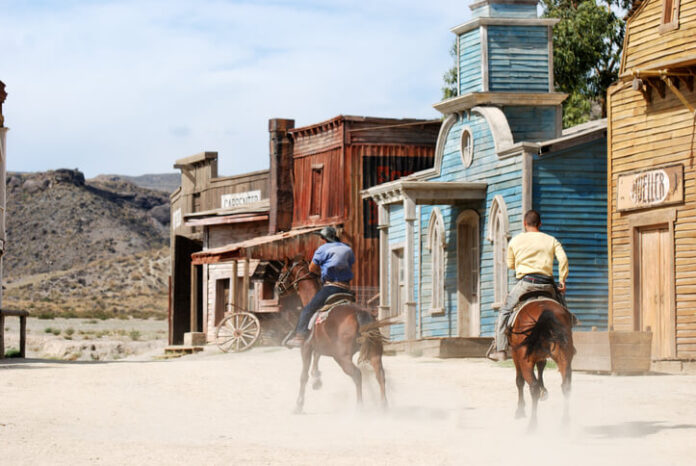Perhaps you have seen one of his iconic paintings of Russell and wish to know the story behind this amazing artist. Russell is no doubt one of the greatest American artists every inquisitive mind should desire to know about. His works are unique and exceptional.
So, in this post, we will take you on a lovely journey to explore the life of Charles Marion Russell. Let’s together journey back to the humble background of this legendary artist.
From Ranch Hand to Renowned Artist: Tracing the Journey of Charles Marion Russell
Charles Marion Russell was a celebrated American artist who captured the essence of the Wild West through his iconic artworks. Born in 1864 in St. Louis, Missouri, Russell grew up in a well-to-do family, but he was drawn to the rugged and adventurous lifestyle of the American West. At the age of sixteen, he left home to become a ranch hand in Montana.
Russell’s time as a ranch hand exposed him to the daily life of cowboys and Native Americans, which inspired him to start drawing and painting scenes from the West.
He would often sketch during his free time, using whatever materials he could find, including charcoal and scraps of paper. His talent was soon recognized by fellow cowboys, who encouraged him to pursue art as a career.
In 1887, Russell’s first painting was sold to a local hotel owner in Montana. He continued to sell his paintings and sketches to various buyers, including ranchers and businessmen, but it wasn’t until 1893 that he gained national recognition.
That year, he exhibited his artworks at the World’s Columbian Exposition in Chicago, where he won a gold medal for his paintings of cowboys and Native Americans.
His success at the exposition led to a steady stream of commissions and exhibitions. He painted a variety of subjects, including buffalo hunts, horse races, and battles between cowboys and Indians. His style was realistic, but he also injected a sense of humor and humanity into his artworks, which helped him connect with a wider audience.
Throughout his career, Russell remained committed to preserving the history and culture of the American West. He was a close friend of many Native Americans, and he often used their stories and traditions as inspiration for his artworks.
He also documented the lifestyle of cowboys, which was rapidly disappearing due to the growth of industrialization and the decline of the open range.
He continued to paint and sketch until his death in 1926, leaving behind a legacy that continues to inspire artists and art lovers alike. His artworks capture the spirit of the American West, as well as the humanity and humor of the people who lived there.
From humble beginnings as a ranch hand, Charles Marion Russell became one of the most celebrated artists of his time, and his influence can still be seen in Western art today.
Capturing the Spirit of the West: Exploring Russell’s Iconic Cowboy Artworks
Charles Marion Russell’s iconic artworks have become synonymous with the American West. His paintings and sketches capture the spirit and essence of the Wild West, from the rugged landscape to the people who lived there.
His art is known for its realism, humor, and humanity, and it has influenced generations of Western artists. Let’s take a quick look at some of his works.
The Roundup
One of Russell’s most famous paintings is “The Roundup,” which depicts a group of cowboys herding cattle. The painting is notable for its vivid colors, attention to detail, and sense of movement.
His depiction of the cowboys is also notable for its accuracy; he drew on his own experiences as a ranch hand to capture the nuances of cowboy life.
In Without Knocking
Another iconic painting by Russell is “In Without Knocking,” which shows a cowboy entering a saloon. The painting got popular for its humor; the cowboy is so eager to enter the saloon that he doesn’t bother knocking or even opening the door.
The painting also captures the atmosphere of a saloon in the Wild West, with its rough-and-tumble clientele and rowdy atmosphere.
The Sun Worshipers
This is one of his most famous paintings of Native Americans is “The Sun Worshippers,” which shows a group of Blackfeet Indians praying to the sun. The painting depicts the solemnity and spirituality of the moment, as well as the beauty of the landscape.
Waiting for a Chinook
Russell’s artworks also capture the changing landscape of the American West. He documented the decline of the open range and the growth of industrialization, which threatened the traditional cowboy way of life.
One of his paintings, “Waiting for a Chinook,” shows a group of cowboys huddled around a fire, waiting for the Chinook winds to arrive and melt the snow.
Preserving the Legacy: The Lasting Impact of Charles Marion Russell on Western Art
Charles Marion Russell was a trailblazer in the world of Western art. His iconic paintings and sketches expressed the essence of the American West and helped to define the genre of Western art. His legacy has had a lasting impact on Western art, influencing generations of artists and preserving the history and culture of the American West.
One of the ways that he has influenced Western art is through his realistic style. He was known for his attention to detail and his ability to capture the nuances of life on the range. His paintings and sketches are not only beautiful works of art, but they also serve as historical records of the people and places that he observed.
Many Western artists have followed in Russell’s footsteps, using his realistic style as a model for their own work.
Charles’s influence on Western art is also evident in his subject matter. He documented the daily life of cowboys and Native Americans, which was rapidly disappearing due to the growth of industrialization and the decline of the open range.
His artworks serve as a reminder of this bygone era, and they offer a glimpse into a world that is now lost to history. He also influenced Western art through his sense of humor and humanity.
Yes, his artworks are not just beautiful; they are also full of personality and character. His paintings and sketches capture the spirit and essence of the American West, from the rough-and-tumble cowboys to the stoic and spiritual Native Americans.
Final Note
Charles Marion Russell’s impact on Western art and the cultural heritage of the American West is undeniable. Through his art, he captured the essence of the rugged landscape, the people who lived there, and the changing times.
His realistic style, sense of humor and humanity, and commitment to preserving the history and culture of the American West have influenced generations of artists and continue to do so today.
















